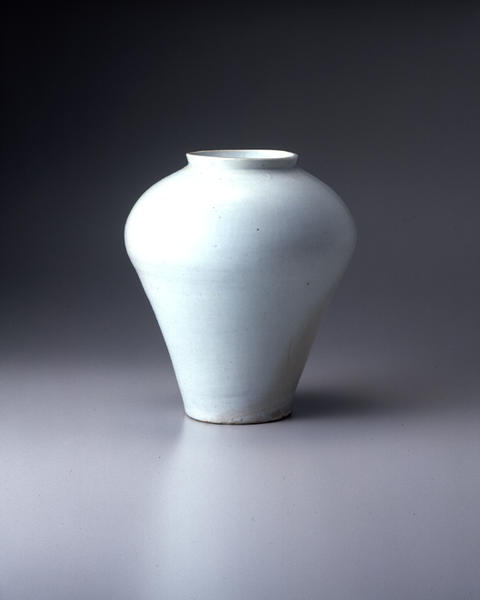Jar, White Porcelain
- Korea
- Korea, Yi dynasty
- 17c
- White Porcelain
- H-31.5 D-28
Catalogue Entry
Although white porcelain already existed in the Koryo era, it was not until the Yi dynasty era that white porcelain ware was perfected. The taste for white porcelain was probably due to the fact that the world's largest pottery industry, located in Jingdezhen, was based on white porcelain. In addition, the adoption of Confucian philosophy from China as the guiding ideals for the nation seems to have influenced the inclination for white porcelain. That is, the Confucian philosophy, that espoused purity, integrity, and innocence, preferred the whiteness of the white porcelain. In the 15th century, Chinese technology of creating white porcelain was brought in to produce "snow white porcelain." The color, however, began to take on a bluish hue in the 17th century.
The two major types of white porcelain in the Korean Yi dynasty were tall, standing pots, and round pots similar to a round, rotund lantern or shaped like a bead on the Japanese abacus. These large works could not be formed on a potter's wheel all at once, so a technique was developed to form the vessel in two parts upper and lower and then the pieces were joined. This large work has a low raised mouth and prominent protruding shoulders that taper sharply to the bottom. A slight bluish glaze was applied somewhat heavily on the pot. Half of the body has a blackish coloration. The pot also shows a crack in the glaze in the lowest part of the pot. On the bottom of the pot on the outside, a few grains of black and white sand are visible. This is a vase that is strong yet elegant.
